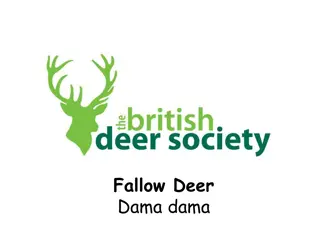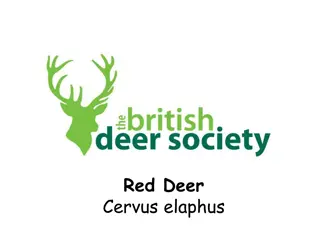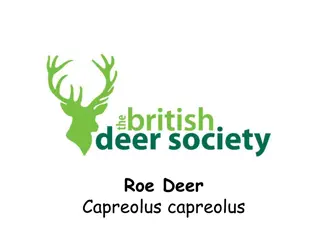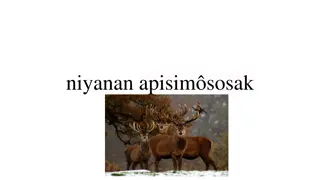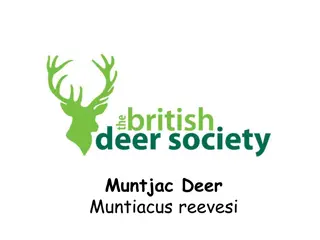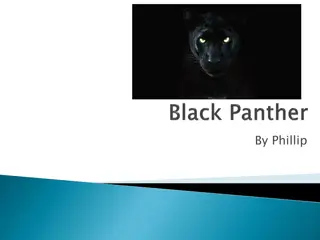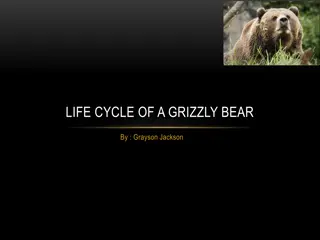Fascinating Facts About Fallow Deer
Fallow deer, introduced by the Normans for hunting, boast flat antlers shed annually. Living in herds, they mate in autumn, giving birth to agile fawns in seven months. Their diet includes various plants, and they leave distinctive tracks in the wild.
Download Presentation

Please find below an Image/Link to download the presentation.
The content on the website is provided AS IS for your information and personal use only. It may not be sold, licensed, or shared on other websites without obtaining consent from the author. Download presentation by click this link. If you encounter any issues during the download, it is possible that the publisher has removed the file from their server.
E N D
Presentation Transcript
Fallow deer were introduced for hunting by the Normans nearly 1,000 years ago.
The males have characteristic large, flat antlers, called palmate antlers, which they shed every year between April and June.
Their fur is usually reddish- brown and spotted in summer and thicker and greyer, with less distinct spots, in winter. They have a relatively long tail with a dark stripe running along
Fallow deer are sociable animals and usually live in herds of up to 50 or more. There are usually separate herds of males (bucks) and females (does). The male and female herds come together in autumn to mate.
During the rut, males scrape the ground with their antlers to mark their territory and establish their status and clash antlers with persistent rivals.
Breeding Fallow deer mate in October & November and females give birth seven months later to a single young, called a fawn, which weighs only about 4.5kg. It grows quickly and is remarkably agile even at a young age. Within a week, the fawn joins the social group and follows the herd wherever it goes.
Diet Mainly grasses, rushes and leaves from trees. Also acorns, berries and beechmast in the autumn and heather, holly and bark of felled conifers in winter.
Deer tracks Adult tracks are 6.5cm long. Other signs in the wild include regularly walked rutting paths, damaged bushes and frayed bark on saplings.
Habitat Deciduous woodlands, also marshes and meadows. This is the deer most frequently kept in parks.
Predators & threats They have no natural predators, but their numbers need to be controlled in some parks and a certain number are shot each year.


